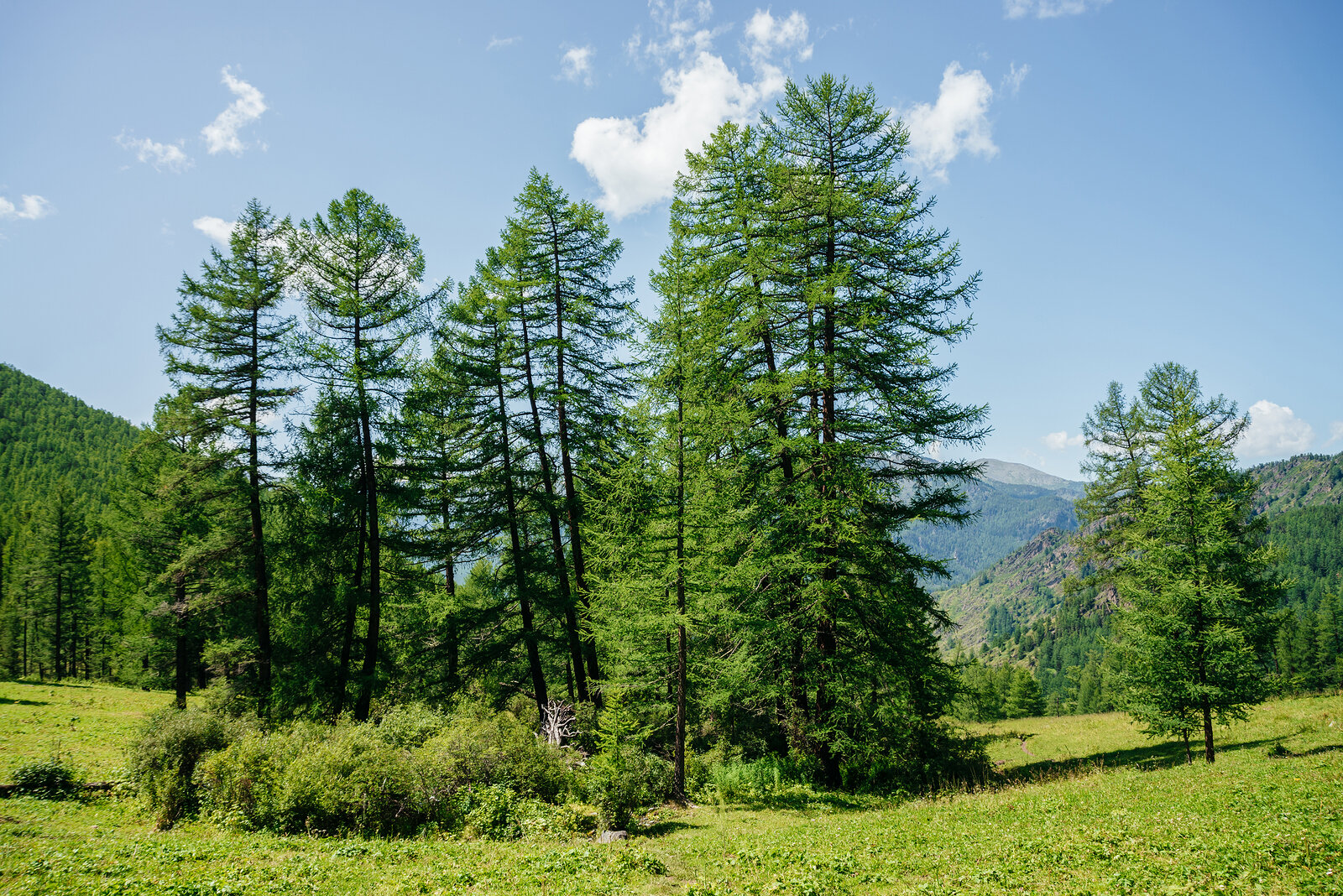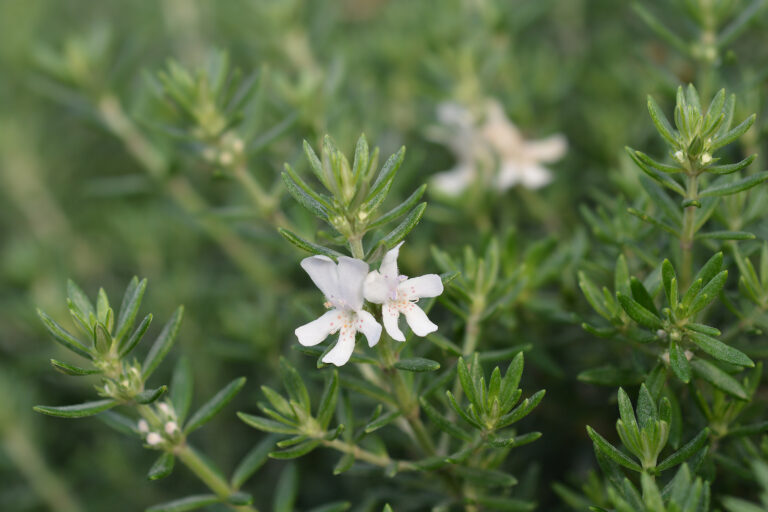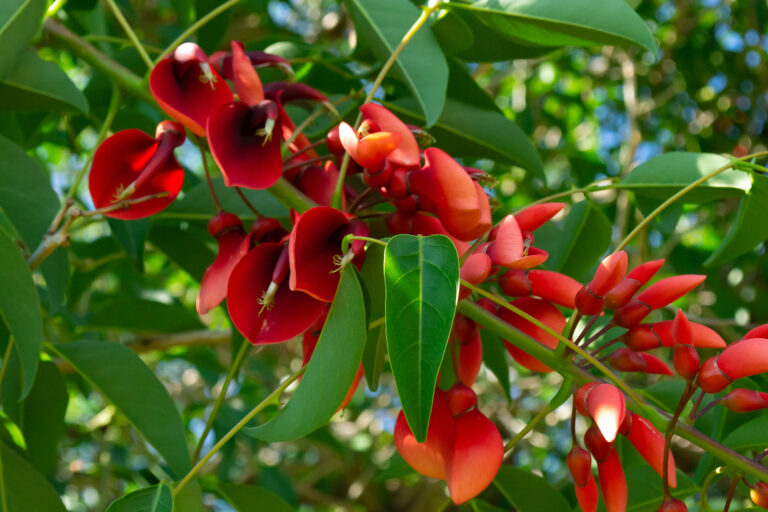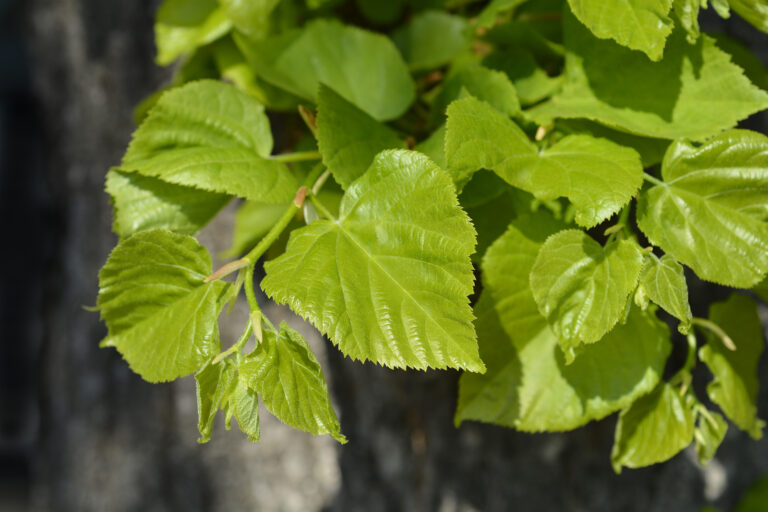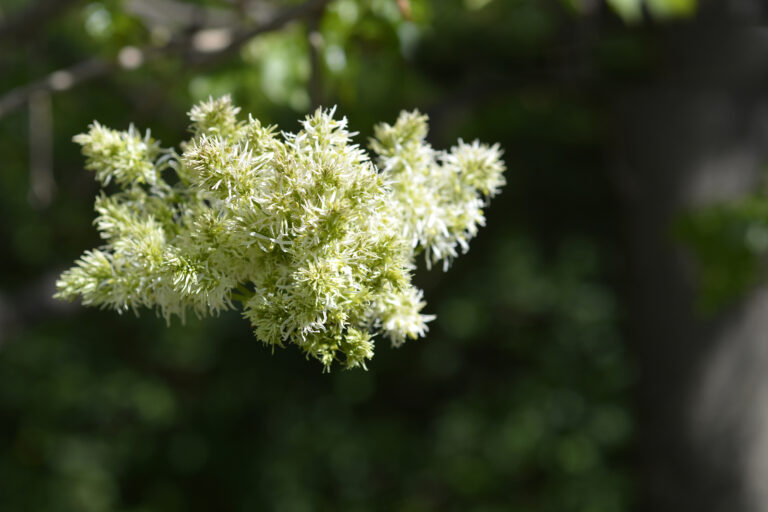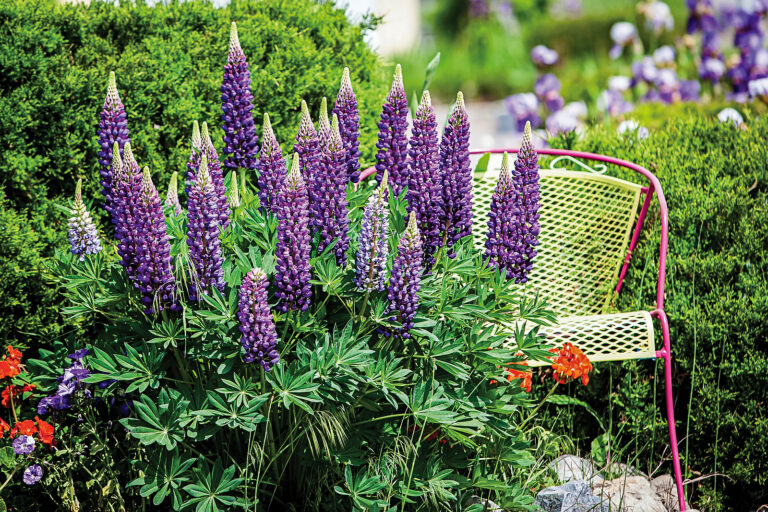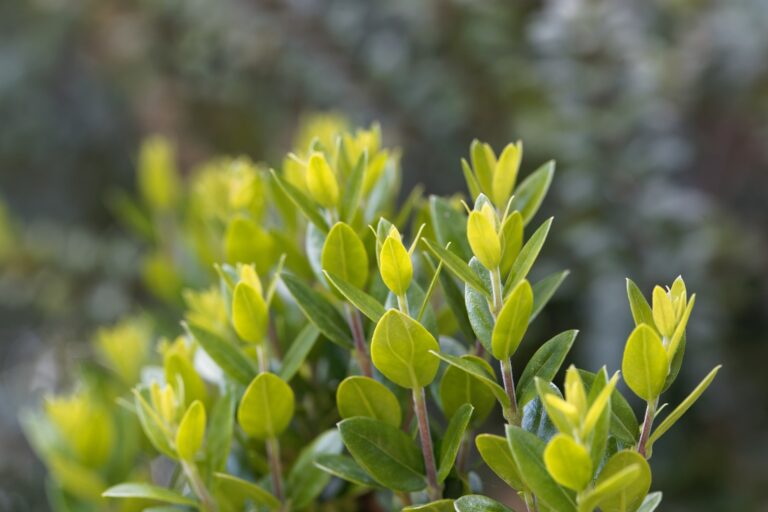How to Grow Larix – Larch
Larches (genus Larix) are unique deciduous conifers that shed their soft, needle-like leaves in fall after a stunning display of golden-yellow color. Native to cool, temperate regions of the Northern Hemisphere, these beautiful, long-lived trees bring year-round interest to gardens with their fresh green foliage in spring, vibrant golden hues in autumn, and an intriguing bare-branched structure in winter. Known for their tolerance to cold climates and ability to thrive in a range of soils, larches make an excellent addition to larger landscapes, especially where seasonal contrast is desired.
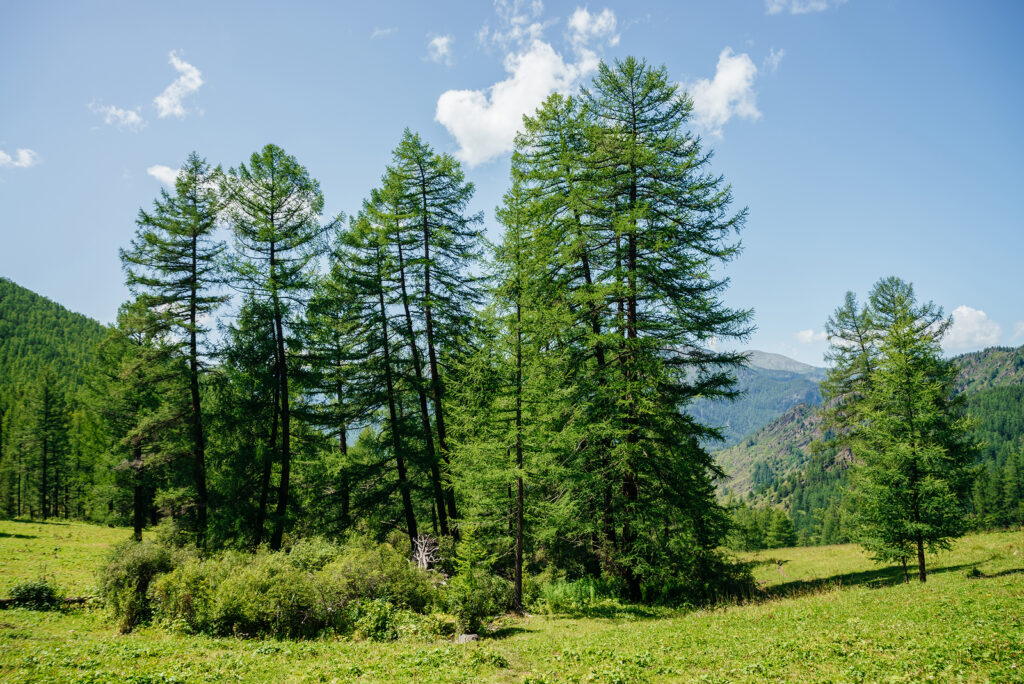
Larix – Larch Species
There are several species of larch commonly grown in gardens, including:
- Larix decidua (European Larch): A fast-growing tree that can reach heights of 60 to 100 feet. Known for its elegant shape and vibrant fall color.
- Larix laricina (American Larch or Tamarack): Slightly smaller than European larch, growing up to 60 feet tall. It’s particularly hardy, tolerating USDA zones 2 to 5.
- Larix kaempferi (Japanese Larch): Another robust variety with reddish-brown bark, it grows up to 90 feet tall and is suitable for USDA zones 4 to 7.
- Larix gmelinii (Dahurian Larch): This Siberian species is extremely cold-tolerant and has a slender form.
All Larix species have soft, needle-like foliage that grows in clusters along the branches. In spring, the new needles are bright green, creating a feathery texture; in fall, they turn a warm yellow to golden color before falling.
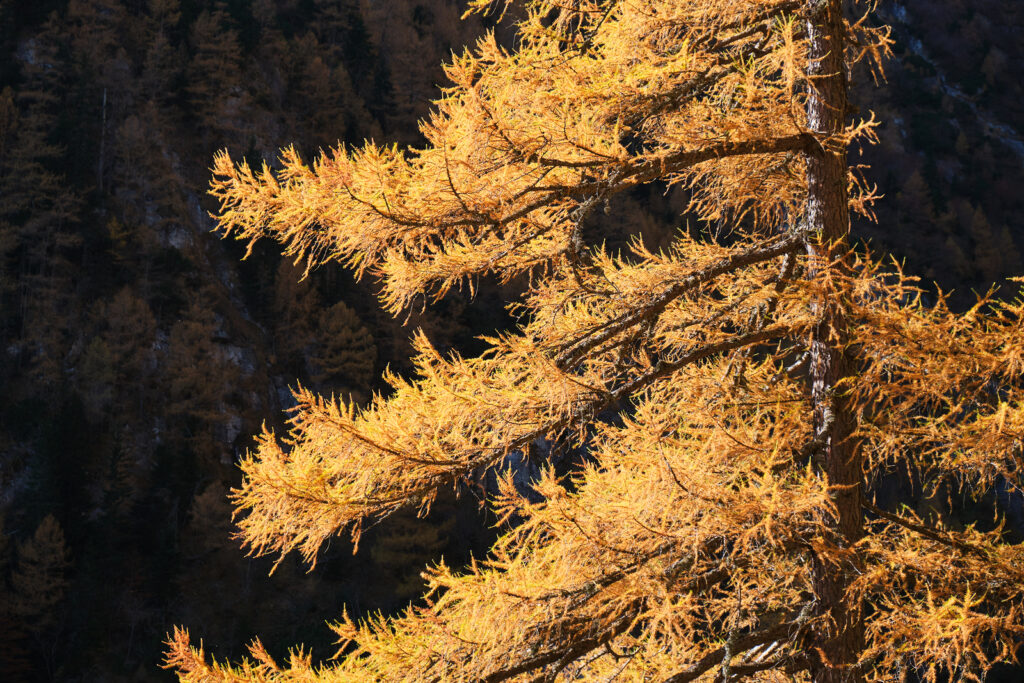
Choosing the Right Larch for Your Garden
Selecting the right larch species depends on climate, soil type, and the available space. While larger varieties like European and Japanese larch are ideal for expansive landscapes, American larch and some dwarf cultivars are more manageable for smaller gardens.
- Climate: Larches are very cold-hardy, thriving in USDA zones 2-7 depending on the species. They prefer cooler climates, and most will not do well in regions with hot, humid summers.
- Soil: Larches prefer moist, well-draining soils with an acidic to neutral pH. They can tolerate wet soils, making them suitable for areas near ponds or in rain gardens.
Where to Plant Larch
- Sunlight: Larches prefer full sun, ideally with at least 6 hours of direct sunlight daily. Insufficient light can result in a thinner, less vigorous tree.
- Soil Moisture: These trees appreciate moist soil, so select a spot that doesn’t dry out too quickly. Avoid waterlogged areas, as they can lead to root rot.
- Spacing: Because of their large mature size, plant larches 20 to 30 feet away from structures or other trees to ensure they have ample space to grow.
How to Plant Larch Step-by-Step
- Timing: The best time to plant larches is in early spring or fall when the weather is mild.
- Digging the Hole: Dig a hole twice as wide and slightly deeper than the root ball of the tree. This extra space will allow the roots to spread easily.
- Preparing the Soil: Mix some compost or well-rotted manure into the soil if the soil is low in organic matter. This can help improve moisture retention and provide essential nutrients.
- Planting: Place the tree in the hole at the same depth it was growing in its container or nursery. Backfill the hole gently, pressing the soil around the root ball to remove any air pockets.
- Watering: Water deeply immediately after planting, making sure the root zone is thoroughly moistened.
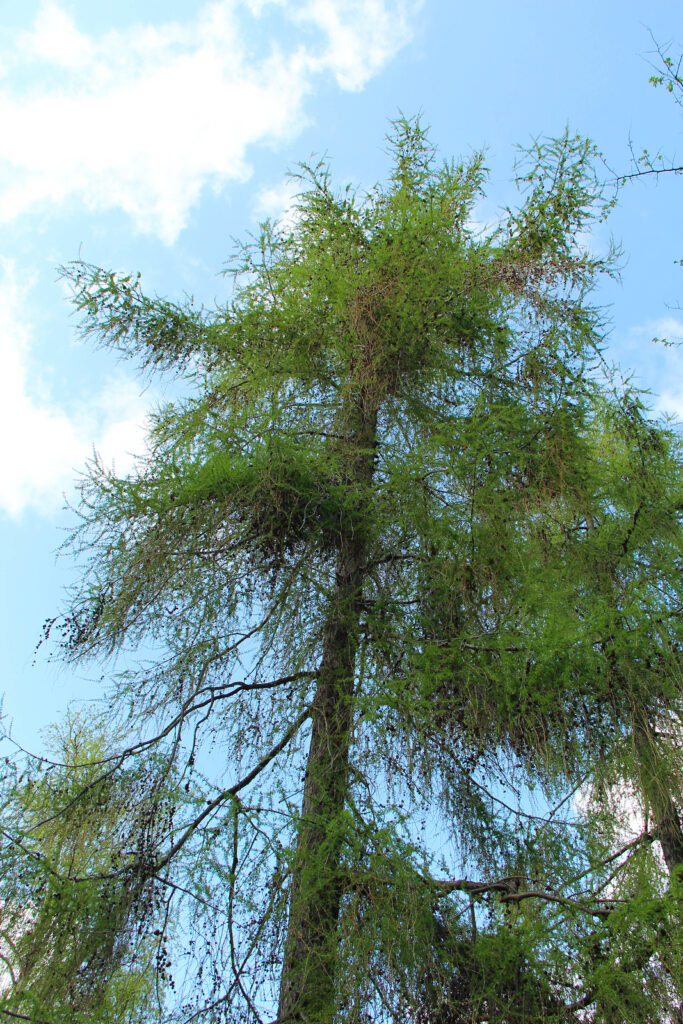
Caring for Larch
Watering
Larches prefer consistently moist soil, especially in their first few years. After establishing, they become more drought-tolerant but still benefit from regular watering in dry periods.
- Young Trees: Water every 1-2 weeks during the growing season, ensuring deep moisture penetration into the root zone.
- Established Trees: Water only during extended dry spells, as mature larches are more resilient to temporary drought conditions.
Mulching
After planting, apply a 2-3 inch layer of mulch around the base of the tree, keeping it a few inches away from the trunk to avoid rot. Mulch helps retain moisture and regulate soil temperature, especially beneficial in the first year as the tree establishes itself.
Fertilizing
Larches are generally low-maintenance and don’t require regular fertilization if planted in reasonably fertile soil. However, in poor soils, a light application of balanced, slow-release fertilizer in early spring can encourage growth. Avoid over-fertilizing, as it may lead to weak, leggy growth.
Pruning
Larches require minimal pruning, but light shaping can enhance their natural form. Prune in late winter or early spring when the tree is dormant.
- Shape Maintenance: Remove any dead, damaged, or crossing branches to improve the tree’s appearance and airflow.
- Height Control: While larches are best left to grow to their natural height, occasional thinning of branches can open up the canopy slightly.
Pest and Disease Management
Larches are relatively resilient but can be affected by a few pests and diseases.
- Larch Casebearer: This pest feeds on the needles, causing them to turn brown and drop. Pruning out infested branches and introducing natural predators can help manage the casebearer.
- Root Rot: Excessively wet soil can lead to root rot, so ensure good drainage and avoid planting in waterlogged areas.
- Rusts and Fungal Infections: These can affect larches in humid climates. Ensure good airflow around the tree, and consider fungicidal sprays if infections are severe.
How to Propagate Larch
Larch trees can be propagated by seeds or cuttings, though seed propagation is more common.
- Seed Propagation: Collect seeds from mature cones in late fall. Sow them in a container with a well-draining mix, and place in a cold frame over winter. Germination may take a few months.
- Cuttings: While possible, cuttings are less reliable than seeds. Semi-hardwood cuttings taken in late summer may root in a well-draining medium with regular misting.
Using Larch in Garden Design
Larches’ unique characteristics and seasonal interest make them valuable in various landscape designs. Here are some ways to incorporate larch into your garden:
Specimen Tree
With its pyramid-like shape, beautiful golden fall color, and sculptural winter form, larch makes an eye-catching specimen tree in large gardens. Plant it as a focal point in a lawn or near a pond to fully appreciate its changing seasonal appearance.
Woodland Gardens
Larches blend naturally into woodland gardens, where their soft needles and open form complement other trees and shrubs. Their preference for acidic soils makes them a good companion for rhododendrons, azaleas, and ferns.
Mixed Borders
For larger borders, larches provide texture and height. In autumn, their golden-yellow needles add a splash of color, contrasting beautifully with late-flowering perennials and ornamental grasses. In winter, the bare branches add structure and interest, especially when paired with evergreens.
Rain Gardens and Moist Areas
Larches tolerate wet soil better than many conifers, making them suitable for planting near ponds or in rain gardens. They help stabilize soil in moist areas, and their tolerance for periodic flooding makes them a valuable addition to gardens with seasonal wetness.
Windbreaks and Shelterbelts
The sturdy, wind-resistant branches of larch make it a good candidate for windbreaks in larger landscapes. When planted in rows, they form an effective screen against wind and snow, while their deciduous nature allows some light through during winter.
Benefits of Using Larch in the Garden
- Seasonal Interest: Larches change dramatically with the seasons, offering fresh green growth in spring, lush greenery in summer, brilliant fall color, and interesting bare branches in winter.
- Wildlife Support: Larch cones and seeds attract birds and small animals, contributing to a wildlife-friendly garden.
- Adaptability: Larches are cold-tolerant and thrive in acidic, moist soils, making them versatile for a range of temperate climates.
- Low Maintenance: With minimal fertilizing and pruning needs, larches are relatively low-maintenance trees, adding beauty with little work.
Potential Challenges with Larch
Though larches are adaptable and resilient, there are a few considerations:
- Size: Larches are large trees that need ample space, so they’re best suited for expansive gardens or properties.
- Needle Drop: Since they’re deciduous, larches shed their needles each fall. While this creates a lovely carpet of golden foliage, it can require some cleanup, especially near pathways.
- Cold Climate Suitability: Larches prefer cool climates and may not thrive in hot, humid areas.
Recommended Larch Varieties
- Larix decidua ‘Pendula’: A weeping form of European larch, ideal for smaller gardens where its cascading branches create a dramatic effect.
- Larix kaempferi ‘Blue Dwarf’: A dwarf Japanese larch with blue-green needles and a compact size, suitable for smaller spaces and rock gardens.
Larch Summary
Larix species bring dynamic beauty to gardens with their seasonal transitions and resilient nature. While they require specific growing conditions, their low maintenance needs, adaptability, and unique structure make them a valuable addition to cool-climate landscapes. Whether used as a striking specimen, incorporated into woodland settings, or planted near moist areas, larches add texture, color, and architectural interest throughout the year, enhancing any garden they grace.

